
As peak growing season winds down, it's time to think about extending your garden's interest into fall. Discounted plants are abundant this time of year, and birds will certainly be thankful for additional sustenance and shelter. Plus, cool-weather landscaping can absolutely still be beautiful.
After four decades of designing and installing gardens, Darryl Abraham of Naples, New York, appreciates options that aren't just easy on the eyes but also on the back. "I'm on the naturalizing, low-maintenance side of things," he says.
He also knows the value of working in layers and using a variety of plants-trees, shrubs, grasses, flowers, and ground covers-for contrast in height, shape, and texture. Some of his favorite fall plants include red twig dogwood, gray dogwood, rose of Sharon, ornamental grasses, goldenrod, milkweed, and American bittersweet.
Darryl is an advocate for autumn gardens thanks in part to his parents, garden authors and radio hosts George "Doc" and Katy Abraham. They grew lush landscapes that included hazelnut shrubs, brambles, apple trees, and more for their own enjoyment and to help sustain wildlife.
To design a gorgeous outdoor space with lasting power, follow some of Darryl's top fall plant recommendations.
GREAT GRASSES
هذه القصة مأخوذة من طبعة October/November 2022 من Birds & Blooms.
ابدأ النسخة التجريبية المجانية من Magzter GOLD لمدة 7 أيام للوصول إلى آلاف القصص المتميزة المنسقة وأكثر من 9,000 مجلة وصحيفة.
بالفعل مشترك ? تسجيل الدخول
هذه القصة مأخوذة من طبعة October/November 2022 من Birds & Blooms.
ابدأ النسخة التجريبية المجانية من Magzter GOLD لمدة 7 أيام للوصول إلى آلاف القصص المتميزة المنسقة وأكثر من 9,000 مجلة وصحيفة.
بالفعل مشترك? تسجيل الدخول
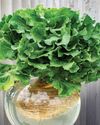
Basics of Hydroponics
Use these top tips and plant picks to have a successful soil-free garden
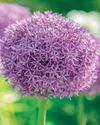
Rooted in Resilience
These hardy perennials will thrive in most zones
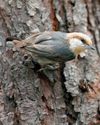
Social and Supportive
Brown-headed nuthatches take a helpful approach to raising their young

All About Owl Pellets
And why you should give a hoot about them
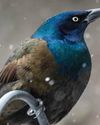
Ask the Experts
Advice from our pros about houseplants, bird feeding and more

BRING THE OUTDOORS IN
Making a terrarium is about as close as you can get to a Zen DIY project. Once you have gathered the proper materials and squared away your plant selections, it's as simple as layering it all together and watching your mini ecosystem thrive. Here, I'll walk you through my foolproof process and cover all the required elements for good filtration, healthy soil, strong root growth and resistance against fungus and disease.

GROW THIS. NOT THAT
Six easy-to-grow houseplants—and six that may not be the right choice for you
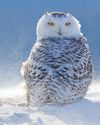
Winter MAGIC
Forecasts may be frigid, but grab your binoculars because birding opportunities are still incredible

Sense or Nonsense? - Why some birds can taste and smell - but others can't
Does a porcelain berry taste like a blueberry to a gray catbird? Does a block of lard smell like frying bacon to a northern flicker? The short answer is no. While some avian species do have a well-adapted sense of taste or smell, they can't distinguish between flavors and odors the way humans can. They're not picking up every ingredient in the suet you put out, says José Ramírez-Garofalo, an ornithology researcher at Rutgers University in New Jersey and the director of Freshkills Biological Station in Staten Island, New York.

Maple Mania - Amazing facts about this fall foliage mainstay
Amazing facts about this fall foliage mainstay